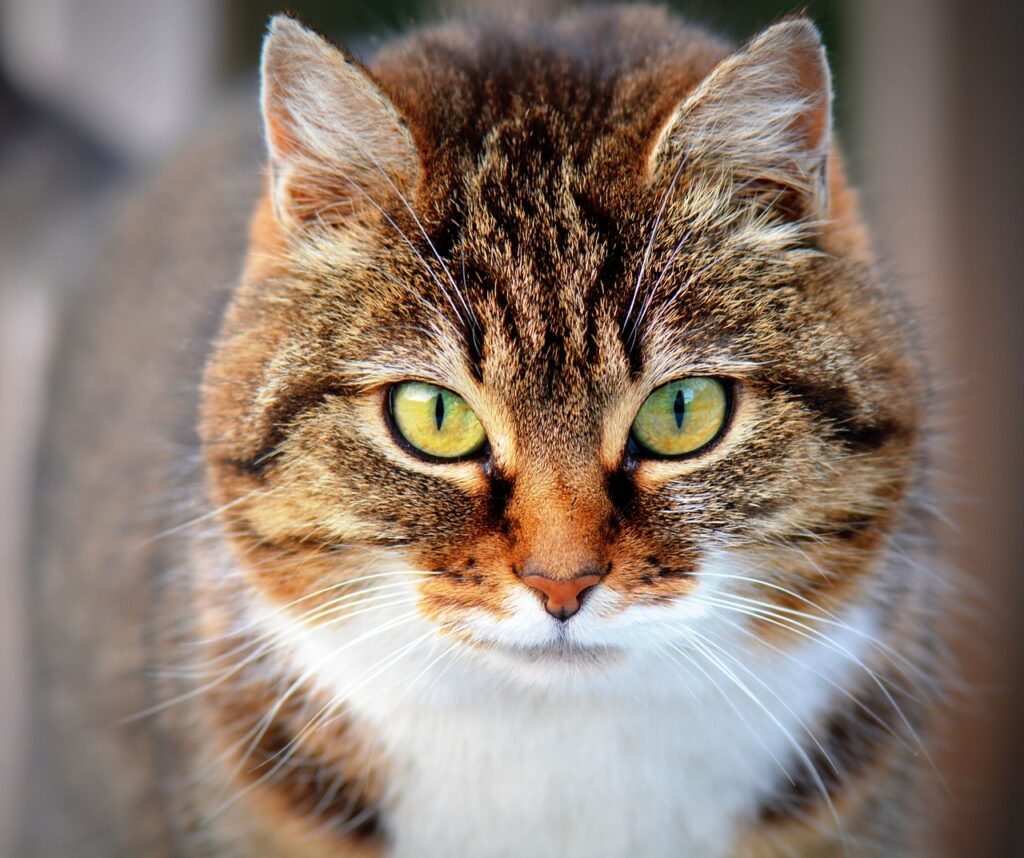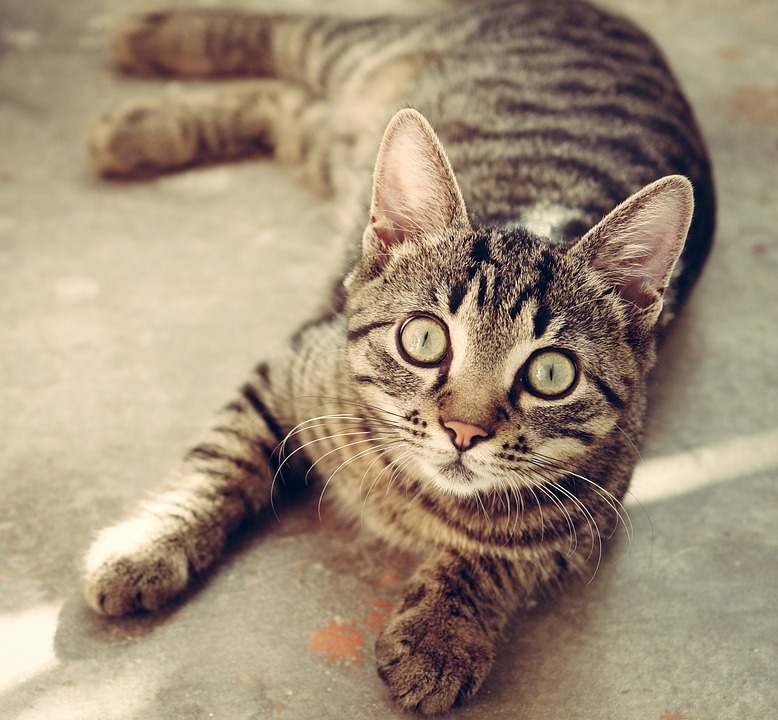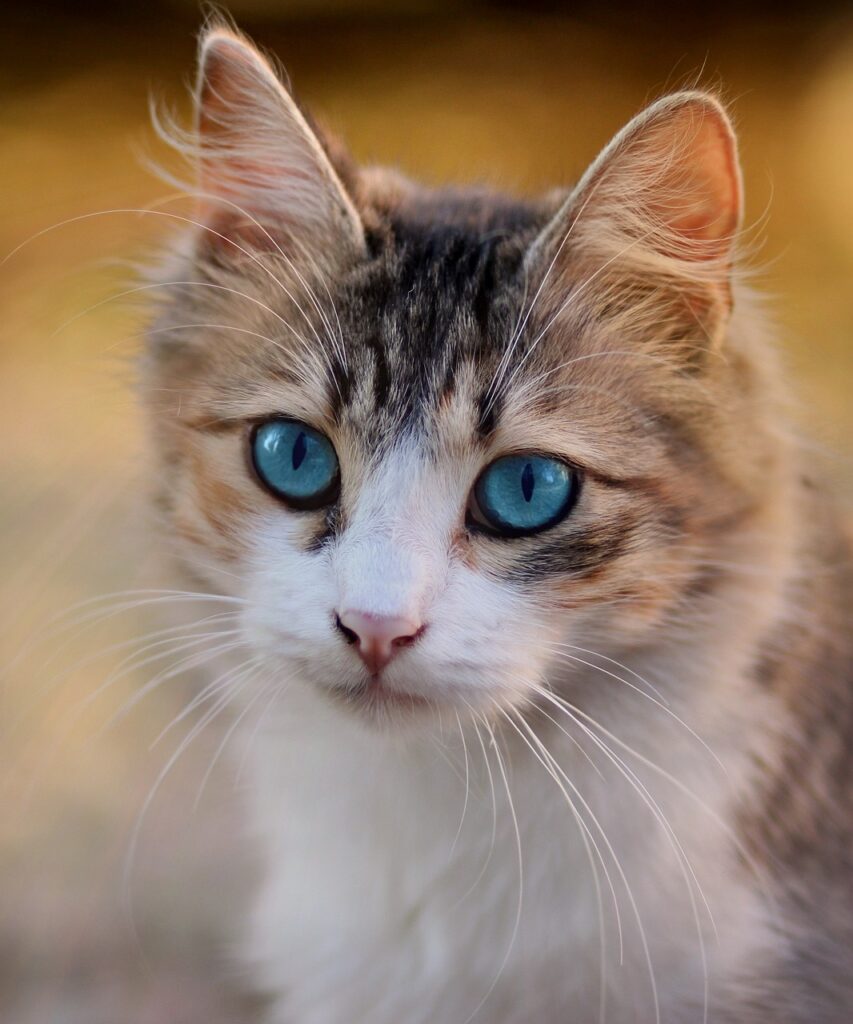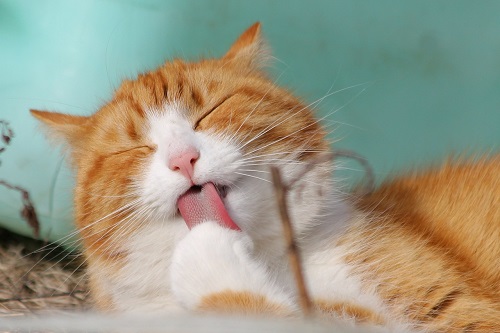The gentle rumble that emanates from a contented cat – the purr – is a beloved sound for cat owners worldwide. But have you ever wondered why your feline friend purrs? This seemingly simple question can help you peek through the fascinating world of feline communication, revealing a complex language of vibrations and emotions.
This comprehensive guide explores the purr in all its glory, answering ten frequently asked questions to unravel the mystery behind this captivating sound.
1. Why Do Cats Purr?
Cats purr for a variety of reasons, making it a multifaceted form of communication. Here are some of the most common explanations:
- Contentment and Happiness: The classic image of a purring cat curled up on your lap is a clear sign of contentment. The rhythmic rumbling signifies a state of relaxation, security, and overall well-being.
- Seeking Attention: A purr can be a clever ploy by your cat to get what they want. Whether it’s playtime, a delicious treat, or simply some petting, a well-timed purr can be irresistible to most cat owners.
- Self-Soothing: Cats may purr when feeling stressed, anxious, or even in pain. The purring acts as a self-soothing mechanism, promoting feelings of calm and potentially aiding in pain management.
- Bonding with Kittens and Mothers: Kittens begin purring as early as a few days old. It’s believed to be a way for them to communicate with their mother, indicating contentment and reassurance. Mothers purr in return, further strengthening the mother-kitten bond.
2. Do All Cats Purr?
While purring is a widespread feline behavior, it’s not universal. Some cat breeds may purr less frequently, while others might not purr at all. This can be due to several factors:
- Breed Differences: Certain breeds, like Siamese or Oriental Shorthairs, are known for their vocal nature and frequent purring. In contrast, some breeds like Bengals or Maine Coons may purr less often.
- Individual Personalities: Just like humans, cats have unique personalities. Some cats are naturally more expressive and vocal, while others are more reserved. This can influence the frequency and intensity of their purrs.
- Age and Health: Kittens often purr more frequently than adult cats. Additionally, illness or injury may affect a cat’s ability or desire to purr.

3. How Does a Cat Purr?
The exact mechanism of purring is still under scientific investigation. However, the prevailing theory involves the larynx (voice box) and the diaphragm. Here’s a breakdown of the process:
- Rapid Muscle Contractions: Muscles surrounding the larynx contract rapidly, at a rate independent of breathing. This rapid oscillation is believed to be the source of the purring vibration.
- The Diaphragm: While not directly involved in creating the sound, the diaphragm plays a supporting role. It controls inhalation and exhalation, allowing for a continuous purr without interrupting breathing.
- Anatomic Differences: Cats have a unique anatomical structure in their larynx compared to other mammals. This difference allows them to produce the characteristic purring sound at a wider range of frequencies.
4. What are the Different Sounds of a Purr?
Cats are capable of producing a surprising variety of purrs, each with its own potential meaning:
- The Low Rumble: A deep, rumbling purr often signifies a state of deep contentment and relaxation. It’s the classic purr associated with a happy cat curled up on your lap.
- The High-Pitched Trill: A higher-pitched trill can indicate that your cat is seeking attention or is feeling particularly excited. It can be a prelude to playtime or a request for a delicious treat.
- The Blended Purr: Many cats produce a combination of low rumbles and higher-pitched trills. By paying attention to the dominant sound and the cat’s body language, you can gain a better understanding of their emotional state.
5. Does Purring Have Any Health Benefits for Cats?
The rhythmic vibrations of a purr may not just be soothing for humans; they hold potential health benefits for cats as well. Here are some promising areas of research:
- Healing and Pain Management: Studies suggest that the low-frequency vibrations produced during purring may promote tissue healing and reduce pain perception. This could explain why injured or sick cats often purr more frequently.
- Stress Reduction: The act of purring may trigger the release of endorphins, hormones known for their mood-boosting and stress-reducing effects. This can help cats cope with stressful situations or unfamiliar environments.
- Lowering Blood Pressure: There’s emerging evidence that purring may positively affect a cat’s cardiovascular health. The rhythmic vibrations could potentially help regulate blood pressure and heart rate.
6. Does Purring Always Mean a Happy Cat?
While purring is often associated with contentment, it’s important to remember that it’s not a foolproof indicator of a cat’s emotional state. Here’s why:
- Seeking Attention: As mentioned earlier, cats can purr to get what they want. A well-timed purr can be a persuasive tactic to request food, playtime, or simply some attention.
- Anxiety and Discomfort: Cats may purr when feeling anxious, stressed, or even in pain. The purring might act as a self-soothing mechanism to cope with these negative emotions.
- Veterinary Visits: Some cats may even purr during stressful situations like vet visits. This doesn’t necessarily mean they’re happy; it could be an attempt to calm themselves down in an unfamiliar and potentially frightening environment.
7. Can Humans Benefit from a Cat’s Purr?
The answer is a resounding yes! The rhythmic vibrations produced during a cat’s purr can have a calming and relaxing effect on humans as well. Here’s how:
- Stress Reduction: The low-frequency sound waves emitted during a purr can induce a relaxation response in humans. Studies have shown that listening to a cat purr can lower blood pressure, heart rate, and stress levels.
- Improved Mood: The calming effect of a purr can positively influence mood. The rhythmic vibrations may trigger the release of endorphins in humans, similar to the effect observed in cats, promoting feelings of well-being and reducing anxiety.
- Promoting Bonding: The act of petting a purring cat can strengthen the bond between humans and their feline companions. The overall experience can be mutually beneficial, fostering feelings of relaxation and contentment for both parties.

8. How Can I Tell If My Cat’s Purr is a Good Sign?
By observing your cat’s body language alongside the purr, you can gain a deeper understanding of their emotional state. Here are some signs that accompany a contented purr:
- Relaxed Body Posture: A cat expressing contentment through purring will typically have a relaxed body posture. Look for signs like closed or half-closed eyes, a loose and drooped tail, and kneading paws.
- Head Nudges and Body Bumps: A gentle head nudge or body bump can accompany a contented purr, signifying a desire for affection or simply enjoying your company.
- Purring While Eating or Playing: If your cat purrs while eating a favorite meal or during playtime, it’s a clear sign they’re enjoying the experience.
9. Should I Be Worried If My Cat Purrs Constantly?
While a happy cat might purr frequently, excessive purring, especially accompanied by unusual behavior or changes in personality, could indicate an underlying health issue. Here are some red flags to watch for:
- Constant and Incessant Purring: If your cat purrs constantly, even in situations where it seems out of place, consult your veterinarian. This could be a sign of pain, discomfort, or illness.
- Lethargy and Loss of Appetite: Excessive purring combined with lethargy, loss of appetite, or other changes in behavior warrants a visit to the vet.
- Changes in Purring Sounds: A hoarse or raspy purr could be a sign of respiratory problems. Similarly, a purr that seems strained or labored might indicate discomfort.
10. Can I Make My Cat Purr?
The best way to encourage purring is to create a loving and comfortable environment for your cat. Here are some strategies that might trigger a rumbling response:
- Gentle Petting: Most cats enjoy being petted in specific areas like behind the ears or under the chin. Gentle stroking can induce relaxation and trigger purring.
- Playtime: Engaging your cat in a stimulating playtime using their favorite toys can lead to excitement and contented purring afterward.
- Offering a Safe Space: Provide your cat with a cozy hideaway or perch where they feel secure and relaxed. This can encourage them to settle in and start purring.
- Mimicking the Purr: Some cat owners find that gently mimicking a purring sound can encourage their cat to purr as well. It might act as a calming signal and initiate a purring response.
By understanding the complexities of the purr, you can gain valuable insights into your cat’s emotional state and build a stronger bond with your feline friend. Remember, every cat is unique, and their purring behaviors may vary. Patience, observation, and a loving approach are key to unlocking the secrets behind your cat’s rumble.

Beyond the Purr: A Look at Feline Communication
The purr is just one facet of a rich and complex communication system employed by cats. Here’s a glimpse into some other ways your cat might be trying to talk to you:
- Vocalizations: Meows, chirps, trills, and yowls all carry specific meanings depending on the context. A high-pitched meow might indicate hunger, while a drawn-out yowl could express fear or frustration.
- Body Language: Tail position, ear posture, and facial expressions all play a significant role in feline communication. A swishing tail can signify agitation, while flattened ears often indicate fear or submission.
- Scent Marking: Cats use scent marking, achieved by rubbing their bodies or heads on objects, to communicate their territory and presence.
Conclusion
The purr is a window into the emotional world of your cat. By understanding its nuances and appreciating its complexities, you can deepen your bond with your feline companion. By combining this knowledge with observing your cat’s body language and vocalizations, you’ll be well on your way to becoming a fluent cat communicator. Remember, a happy purr is a sign of a contented cat, and fostering an environment that encourages purring is a recipe for a strong and loving relationship between you and your furry friend.
Additional Resources:
American Society for the Prevention of Cruelty to Animals (ASPCA): https://www.aspca.org/
International Cat Care: https://www.tica.org/
The Cornell University College of Veterinary Medicine Feline Health Center: https://www.vet.cornell.edu/departments-centers-and-institutes/cornell-feline-health-center

